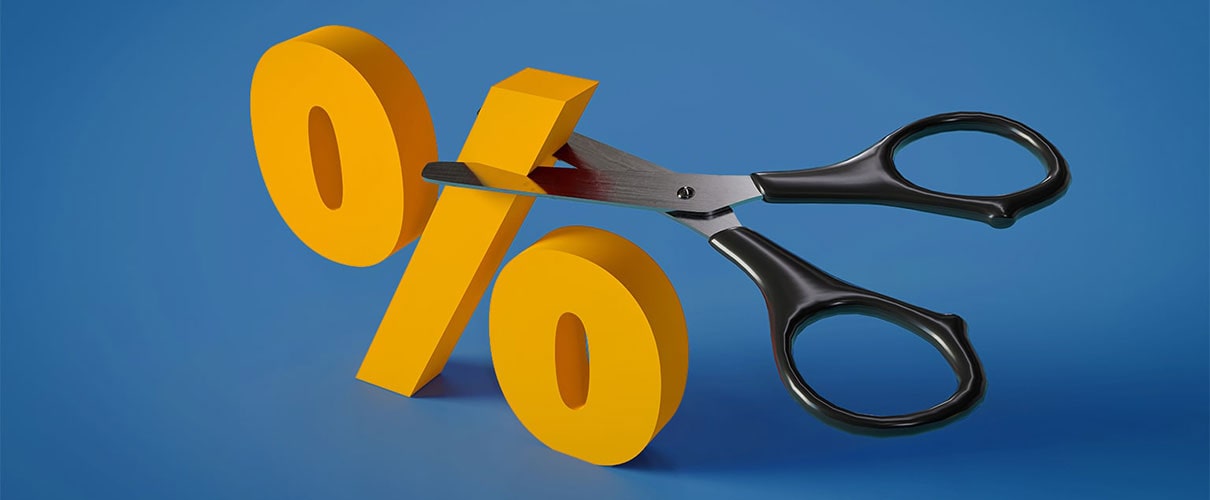Financial reality check: Are you prepared?
If you are like many other Americans, you are probably feeling a bit unsure about trying to understand how economic and social conditions can impact your own personal financial life, your goals, and your future plans. Uncertain economic conditions combined with concerns about inflation and fears of a possible recession can contribute to feelings of financial insecurity, largely because they are out of your control.
In fact, just 25% of Americans say they feel completely financially secure, down from 28% in 2023. On average, Americans feel that they’d need to earn over $186,000 dollars to feel financially secure, more than two times what the average full-time worker earns.
Here’s what is important to remember: Even though you can’t control economic uncertainty, inflation, or some other factor, you can make some changes to your personal financial habits and plan to help set your mind at ease. You may be asking yourself…how?
Shielding your finances from shrinkflation, inflation, and everything in between
You may find yourself wondering: What on earth is shrinkflation? Shrinkflation is often a side effect that occurs from an extended period of inflation. Instead of directly raising the prices of consumer goods, manufacturers reduce the amount of product in a container and sell it for the same price. This can lead to you feeling like you don’t get as much food out of your grocery trip for the same amount of money as you used to, or that toilet paper rolls just don’t last as long.
Currently, inflation is still leading to increased prices and shrinkflation throughout the economy, but it is starting to improve. According to the Consumer Pricing Index, inflation has fallen to 2.8% as of February 2025, down from a high of 9.1% in June 2022.
Aside from increasing your grocery bill, inflation also impacts your personal finances in other ways. In 2024, employers planned for an average wage increase for their workforce of 3.5%. With inflation currently at 2.8% that means the average worker is only seeing a 0.7% increase in spending power. In times of high inflation, workers may receive salary increases below the inflation percentage, which means their spending power actually decreases.
This, paired with the increased price of consumer goods, can greatly impact how far each dollar you spend goes, your budget, and your financial plan, so it is important to consider these factors when evaluating your financial life today.
Where do interest rates fit in?
Interest rates are another piece to the puzzle when looking at your finances during these uncertain economic conditions. Right now, the interest rate set by the Fed Funds Rate is still elevated compared to years in the past, which has some distinct impacts on your wallet.
When the Fed Funds Rate is high, the cost to borrow money is higher. This impacts things like your credit cards, auto loans, and mortgage. The flip side of this is interest earning bank accounts, like certificates of deposit and money market accounts typically will earn interest at a higher level than normal. This means the money that you do save can grow faster, adding to your overall savings.
The best way to adapt your financial plan to various interest rates environments is to understand how you can make the most of the situation. Here are some actions you can take based on the current or future interest rate environment:
Better planning, less stress, and more success
The most important thing you can do to help protect yourself from rising costs, lifestyle creep, and changing life events is evaluating your budget at least once a year. Whether you’ve already nailed down your budget or are looking to start one that you can stick to, planning your finances isn’t a set it and forget it process. You need to evaluate what parts of your budget are working, what parts have opportunities to improve, and whether you are making progress towards your financial goals.
Here’s how to evaluate your budget and overall financial plan:
1. Understand your income and spending habits
You’ll want to start by adding up all the money your household earns in a month. This includes earnings from your significant other if you have one, as well as any extra income you earn from side hustles or other sources. Did you or someone in your household get a raise this year? Or reduce their hours to help with childcare? Make sure you factor in any changes that occurred.
Then you’ll want to determine where you spent your money each month and how close you were to the target in your budget. A common way to categorize these expenses is by dividing things into three categories:
- Needs
- Wants
- Savings
These are expenses you can’t avoid for necessities and expenses. Here are some examples of common needs:
- Rent
- Food
- Utilities
- Gas
- Car payments
Wants include things you want to spend money on. It is important to make sure you include room in your budget to do the things you enjoy. Some common wants include:
- Hobbies
- New clothes
- Vacations
- Technology
- Pets
The final area of your spending are the ways you pay yourself by increasing your savings and reducing debt. Most people include debt reduction as part of the savings area of their budget since money spent servicing debt is money that you can’t save. Reducing debt is a critical way to free up more money when you need it, so don’t skimp on this category.
2. Evaluate your goals
For your goals to work, first you need to know what they are. Your goals should have a mixture of short-term, mid-term, and long-term durations. As time passes and you make progress on your goals, you’ll find you start accomplishing your short-term goals and then you start to make progress on the mid- to long-term goals.
As you make progress on your goals you should occasionally make sure they are still relevant to your plan. You may find your priorities have changed, or you’ve recently been able to save more (or less) money as a result of the economy or progress in your career.
3. Make adjustments
Once you’ve evaluated the progress towards your goals, it is time to make adjustments as needed. These factors may cause you to need to adjust your budget and financial plan:
- Getting married or divorced
- Having children or grandchildren
- An increase or decrease in income
- Employment changes
- Inflation
Even though some aspects of your life, like the economy and inflation, are entirely out of your control you can control your reaction to them by adjusting your budget and goals. You may find when times are good, mid-term goals are accomplished a lot more quickly. When times aren’t as good, don’t be afraid to give yourself some grace and realize some of your long-term goals might take a few more months or years to achieve.
An emergency fund is your first line of defense
The best way you can protect yourself from economic conditions beyond your control is ensuring you build and maintain your emergency fund. The general rule of thumb for your emergency savings is to try to save at least 3-6 months of expenses. If you haven’t already started, it can take some time to reach that number, but any emergency savings at all is a valuable buffer against the things you can’t control. You’ll want to make sure you avoid touching your emergency savings fund unless something is truly an emergency, so it might be a good idea to keep your emergency savings in a separate account from your normal savings.
You should look at how much you have in your emergency fund every year and ensure you’ve accounted for any changes in your financial situation. If you’ve increased your expenses, you should increase your emergency fund savings as well. If you work in an industry that doesn’t have high job security, increasing your savings can help you if you find yourself looking for a new job.
Controlling what you can control
You can’t control the global economy, grocery prices, or interest rates but you can control how you react to them. Staying aware of the factors that impact your financial life, whether directly or indirectly, is the best way to ensure you are in a good position regardless of how well the economy is doing.
Looking at your budget regularly provides you opportunities to adapt to anything that’s headed your way. Like anything else, making changes to your plan and your budget will get easier as you do it more and more.
The same is true with adjusting how you shop when prices are high, tracking your progress towards your goals, and even beginning to have a better understanding of how inflation and interest rates directly affect your finances.
If you’re looking for a personalized approach to your finances, get in touch with your local banking center to meet with a financial specialist to help get started building a unique financial strategy. Or if you prefer to connect with a banker online, you can submit a question or get more information by filling out this short form.




